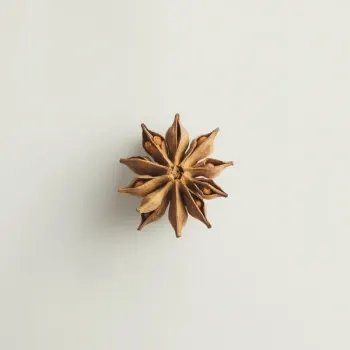Cinnamon and Allspice are distinct spices used in cooking and baking. Cinnamon is sweet and woody, ideal for baked goods, while Allspice offers a complex flavor suitable for savory dishes. Both can be used to enhance drinks and are available in various forms.

Cinnamon is a warm, sweet spice obtained from the inner bark of several tree species from the genus Cinnamomum. Used in both ground and stick forms, it's a staple in baking and is also incorporated into savory dishes around the world.

Allspice, despite its name suggesting a blend, is a single spice made from the dried berries of the Pimenta dioica tree. It has a complex flavor profile that combines notes of cinnamon, nutmeg, and cloves, and it's used in a variety of cuisines and dishes.
Cinnamon is sweet with a woody aroma, whereas Allspice has a deeper, more peppery flavor with a hint of nutmeg and cloves. Cinnamon comes in quills or ground form, and Allspice is available as whole berries or ground. They originate from different types of trees and are used in distinct ways across various recipes.

Your ultimate Recipe Box, Meal Planner, and Cooking Class all in one
Cinnamon is a go-to spice for baked goods like cinnamon rolls, apple pies, and snickerdoodles. Its sweet, woody flavor complements the sugar and fruit used in these recipes. For best results, sprinkle ground cinnamon to ensure even distribution throughout the dough or batter. Allspice shines in spice cakes, gingerbread, and Jamaican fruitcakes where its complex flavor profile can stand up to other bold ingredients. Use it sparingly as its strong flavors can overpower if used in excess. Ground allspice is generally preferred for even integration into the mixture.
Cinnamon adds a warm, unexpected twist to lamb stews, Middle Eastern meatballs, and Moroccan tagines. It pairs well with cumin and coriander for a rich, aromatic flavor. A cinnamon stick added during cooking can infuse the meat with subtle sweetness. Allspice is a key ingredient in Caribbean jerk seasoning, Swedish meatballs, and Middle Eastern kibbeh. Its robust flavor complements hearty meats like beef and lamb. Whole allspice berries can be used in marinades or ground into spice mixes.
Cinnamon sticks are perfect for mulling spices in ciders and wines, adding a sweet warmth to beverages. They can also be used as a garnish for hot chocolate or coffee, releasing their flavor as they steep in the hot liquid. Ground allspice is often used in pumpkin spice blends for lattes and can be added to hot toddies for a complex, spicy kick. The berry's multifaceted flavor works well when combined with other spices in warm drinks.
Cinnamon and Allspice are both low in calories and contain trace amounts of vitamins and minerals. They have health benefits when used in moderation.
| Nutrient | Allspice ( per Teaspoon ) | Cinnamon ( per Teaspoon ) |
|---|---|---|
| Fat | 0.2g | 0.03g |
| Sodium | 0mg | 0mg |
| Calcium | 11mg | 26mg |
| Protein | 0.1g | 0.1g |
| Calories | 5 | 6 |
| Carbohydrates | 1.5g | 2.1g |
Yes, but be aware that it will bring a sweeter, less complex flavor to the dish. It works best in sweet recipes.
No, allspice is a single spice made from the berries of the Pimenta dioica tree, but its flavor is reminiscent of a blend of cinnamon, nutmeg, and cloves.
Allspice is generally better for savory dishes due to its complex and robust flavor, although cinnamon can also be used in specific savory recipes for a unique twist.
Start with half the amount of allspice to cinnamon, and adjust to taste due to the potency of allspice.
In culinary amounts, both spices are generally safe. However, consuming them in large quantities may lead to health issues, so they should be used in moderation.